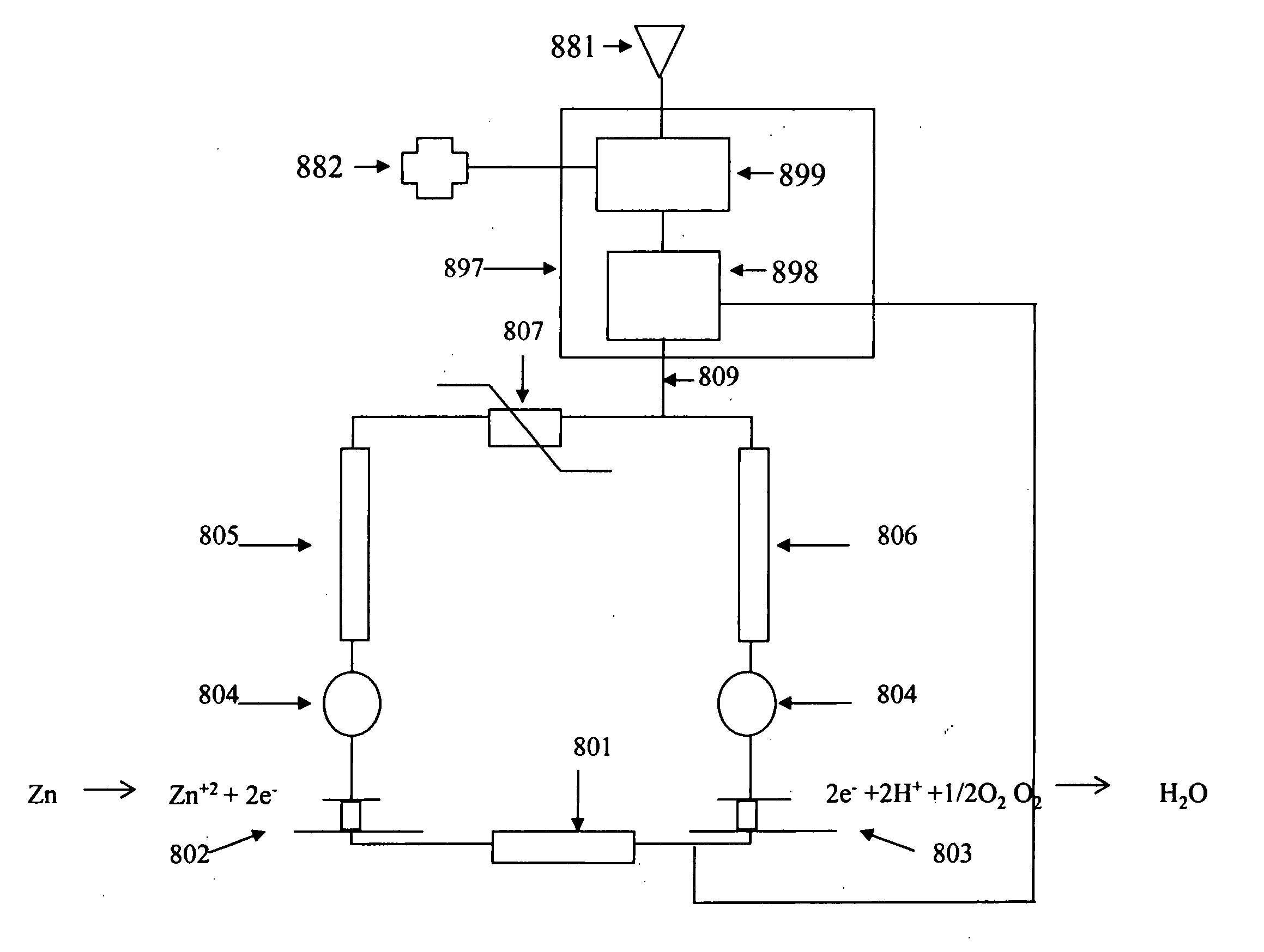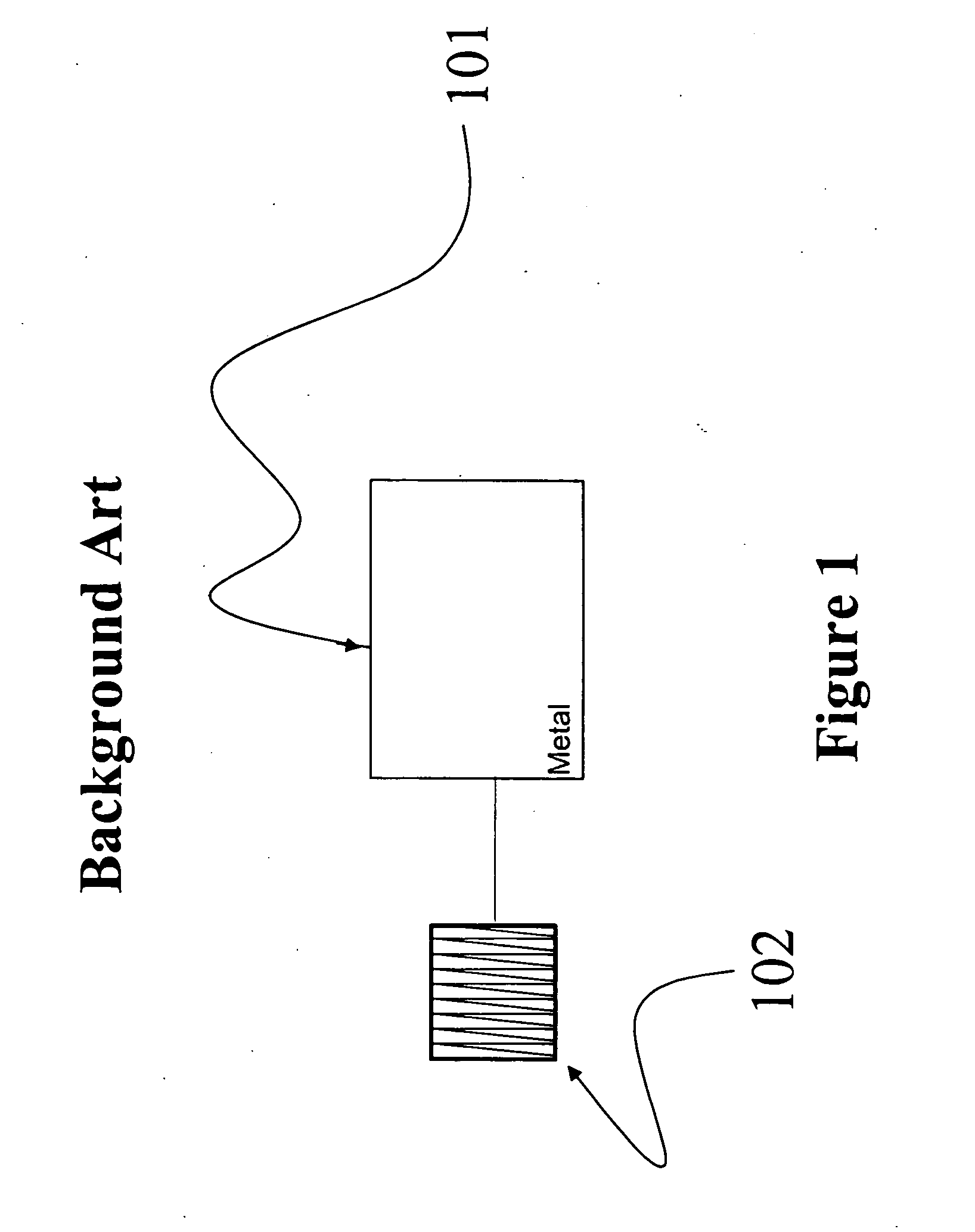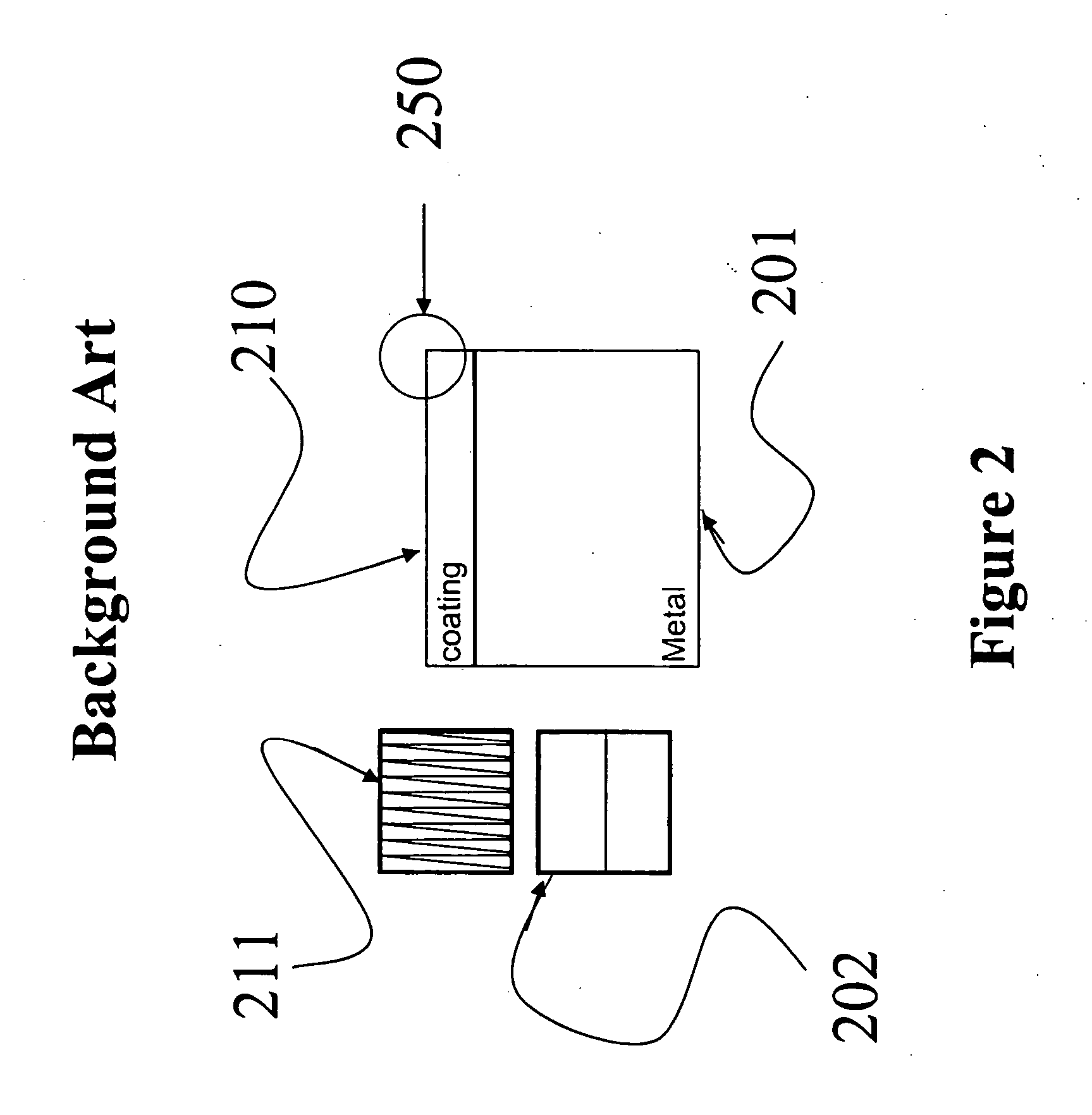Semiconductive corrosion and fouling control apparatus, system, and method
a control apparatus and technology of a control apparatus, applied in the control apparatus, system and method field of a semiconductor-based corrosion and fouling prevention system, can solve the problems of aircraft corrosion, affecting the integrity of the aircraft, and affecting the design life of the aircraft, so as to reduce the corrosive and/or anti-corrosion effect, prevent corrosion, and minimize the corrosive noise in the coating
- Summary
- Abstract
- Description
- Claims
- Application Information
AI Technical Summary
Benefits of technology
Problems solved by technology
Method used
Image
Examples
Embodiment Construction
[0059] The present invention provides a corrosion noise reducing system having an Electronic Control Unit (ECU), a controllable filter, and a semiconductive coating on a substrate.
[0060]FIG. 8 is a circuit diagram of one embodiment of the present invention where components similar to those found in FIG. 6 retain their previous indicia. As shown, the ECU 897 contains a controllable filter 898 and an ECU control circuit 899. The ECU 897 may optionally be connected to one or more local sensors 882, and / or be connected to, and / or contain, an antenna (e.g., for use in wireless communication) 881 or other mechanism for achieving wireless communication, such as with optical transceivers. The ECU may also access data stored in a local data archive (not shown) or in a remote archive accessible via the antenna 881, other wireless communication mechanism or even wired connection, such as a network. The ECU control circuit 899 is configured to change a filter characteristic of the controllable...
PUM
| Property | Measurement | Unit |
|---|---|---|
| surface area | aaaaa | aaaaa |
| frequencies | aaaaa | aaaaa |
| frequencies | aaaaa | aaaaa |
Abstract
Description
Claims
Application Information
 Login to View More
Login to View More - R&D
- Intellectual Property
- Life Sciences
- Materials
- Tech Scout
- Unparalleled Data Quality
- Higher Quality Content
- 60% Fewer Hallucinations
Browse by: Latest US Patents, China's latest patents, Technical Efficacy Thesaurus, Application Domain, Technology Topic, Popular Technical Reports.
© 2025 PatSnap. All rights reserved.Legal|Privacy policy|Modern Slavery Act Transparency Statement|Sitemap|About US| Contact US: help@patsnap.com



